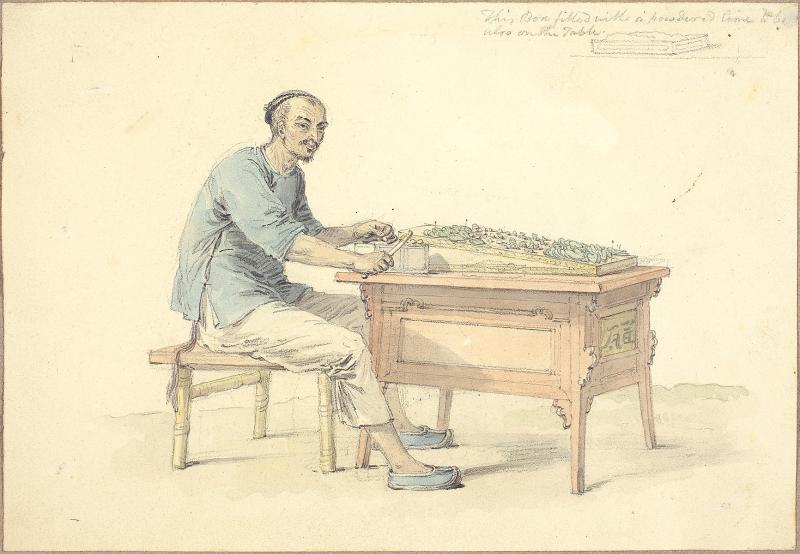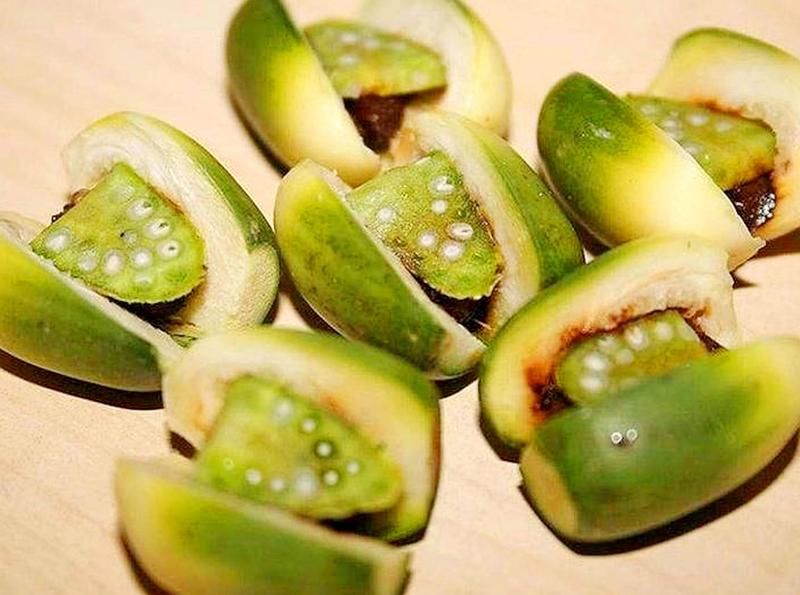People who chew on betel nuts are a high-risk group for contracting oral cancer. Betel nuts sold commercially, in addition to the areca nut — more commonly known as betel nut — usually also contain other ingredients including betel pepper, betel leaf, betel pepper vine, slacked lime and spices. Some people mistakenly believe it is these additives within betel nut preparations that cause damage to the mouth and throat. However guidance by the Ministry of Health and Welfare stresses that as early as 2003, the International Agency for Research on Cancer (IARC) had already proved arcea nut is a group one carcinogen. Despite this, many people — especially the young — are unaware of this fact. In light of this, the ministry has launched a new campaign to encourage members of the public to kick the habit of chewing on betel nuts early to avoid long-term damage to their health.
Research by the IARC has proved that areca nut contains arecoline and arecaidine that, when mixed with saliva in the mouth, adheres to cell membranes and produces a carcinogenic substance. This means that even without the addition of any additives, chewing on areca nut may cause cancer within multiple areas of the body including the mouth, pharynx and esophagus. This is the reason why the nut is categorized as a group one carcinogen.
To help the public prevent and identify oral cancer at an early stage, anyone aged 30-and-above and Aborigines aged between 18-to-30 who use (or have previously used) betel nut, or smoked tobacco, are entitled to an oral cancer screening once every two years. According to the ministry, regular screening allows medical professionals to detect over 5,000 cases of precancer and confirmed cancer every year. Early treatment can prevent the cancer from spreading or becoming worse, and the survival rate for early intervention is as high as 80 percent, the ministry says.

Photo: Wikimedia Commons 照片:維基共享資源
City and county-level health departments also organize ad-hoc education classes every year at hospitals and medical centers to help members of the public quit the betel nut habit. Hospitals also provide an outpatient service for quitting betel nuts, which people can make use of, to receive early treatment before it’s too late.
(Translated by Edward Jones, Taipei Times)
嚼食檳榔者是罹患口腔癌的高風險族群,市售的檳榔成份通常含有:檳榔子、荖花、荖葉、荖籐、石灰及香料等;有部分民眾誤以為是其他添加物才會造成口腔或咽喉受損,衛生福利部國健署強調,早在二○○三年國際癌症研究中心就已經證實,檳榔子為第一類致癌物,但還是有多數人尤其是青少年並不知道,有鑑於此,國健署再次呼籲,及早戒檳才是對自身健康有益處。

Photo courtesy of DaMou Entertainment 照片:大慕影藝提供
國際癌症研究中心證實,檳榔子本身含有檳榔素和檳榔鹼,會透過汁液接觸口腔黏膜而產生致癌物質,即便不含任何添加物都可能導致口腔、咽及食道等部位罹癌,故將檳榔子列為「第一類致癌物」。
國健署呼籲,民眾應預防及早期發現口腔癌,並免費提供三十歲(含)以上嚼檳榔(含已戒)或吸菸民眾、十八歲以上至未滿三十歲嚼檳榔(含已戒)原住民,每兩年一次口腔黏膜檢查;透過篩檢每年可發現超過五千名癌前病變及癌症個案,及早治療有效阻斷轉變惡化,早期存活率高達八成!
國健署補充說明,另各醫療院所或縣市政府衛生局,每年也會不定期開設戒檳班課程,並提供戒檳門診衛教服務,有需要的民眾可多加利用,別錯失早期治療的良機。

Photo: Liberty Times 照片:自由時報
(自由時報)

A: Apart from the musical Sunset Boulevard, Japanese pop diva Ayumi Hamasaki is also touring Taiwan after a 17-year wait. She’s holding two concerts starting tonight. B: Ayu has the most No. 1 hits of any Japanese solo artist, with 33 total. A: “Time” magazine even crowned her as “The Empress of Pop.” B: She staged shows in Taipei back in 2007 and 2008, causing an “Ayu fever” across Taiwan. A: Unfortunately, the singer has been deaf in her left ear since 2008, and is gradually losing hearing in her right ear. I’m so excited to see her singing in Taipei again. A: 除了音樂劇《日落大道》,日本歌后濱崎步睽違17年,今晚起在台北熱唱兩場。

Denmark’s state-run postal service, PostNord, announced that it would cease letter deliveries at the end of 2025 due to the impact of digitalization. As 95% of its residents now use the Digital Post service, Denmark has seen a 90% decline in letter volumes since 2000, from 1.4 billion to 110 million last year. On top of that, the Postal Act of 2024 removes the government’s obligation to provide universal mail service and puts an end to postal exemptions from value-added tax, raising the cost of a single letter to 29 Danish krone (US$4.20). As a result, PostNord is switching

Bilingual Story is a fictionalized account. 雙語故事部分內容純屬虛構。 “One DA-BEI... WU LONG... NAI?” Yujing smiled as the foreigner struggled to order. He looked like an embarrassed puppy. She repeated the order in Chinese, then English: “Oolong milk tea, large size. Half sweet, no ice?” she said gently. He beamed — the kind of full-face, sunshine smile that Latinos are famous for. “Yes! That! You are... lo maximo… the best!” After he left, Lily nudged her. “Nice save. You’re getting the hang of it.” Yujing had taken this summer job at the bubble tea shop to build confidence and get work

Although sending you an SMS (Short Message Service) verification code provides some security, many apps now use code-generating apps and two-factor authentication instead. But more recently, passkeys now use a biometric approach to logging in. Biometrics can offer an even more secure alternative. Following this trend, Google is reportedly planning to replace SMS verification codes with “QR code” scanning. SMS codes are currently used to verify user identity and prevent fraudsters from creating fake Gmail accounts to distribute spam. However, these codes present several challenges. They can be phished through suspicious links, and users may not always have access